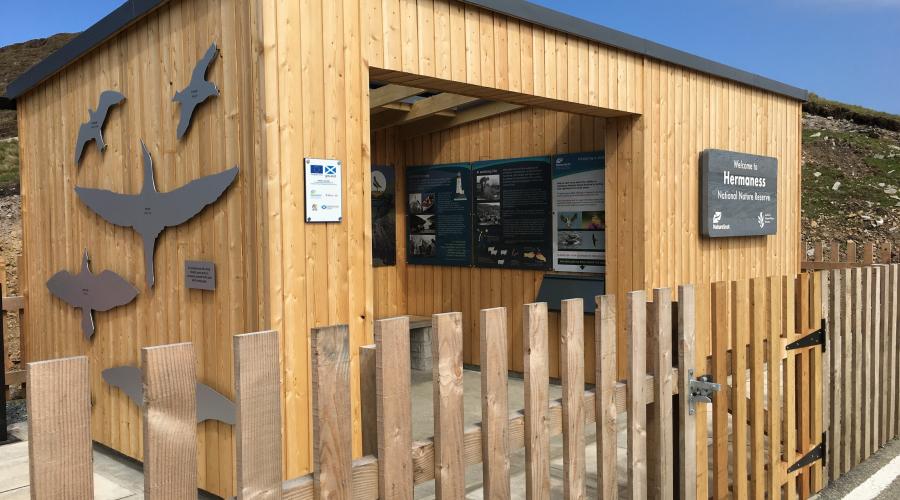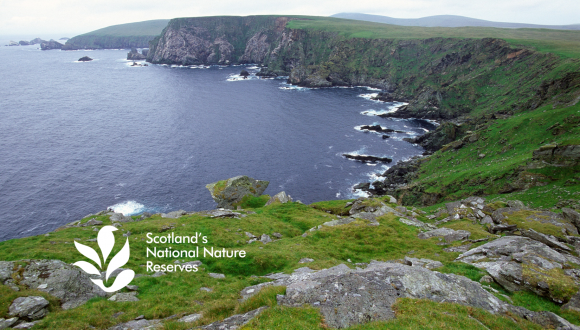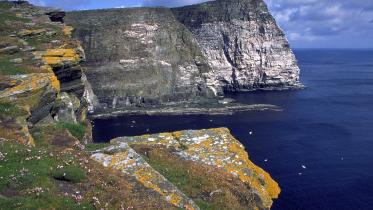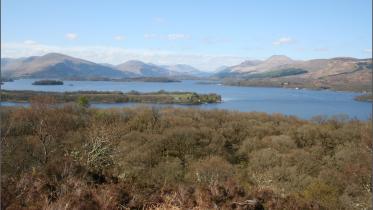
New Hermaness hill path and welcome area opened
17 May 2022
A new hill path and welcome area has been officially opened at NatureScot’s Hermaness National Nature Reserve (NNR).
Visitors can now enjoy nearly 2km of new boardwalk, which retraces the historic path to Muckle Flugga signalling station on Hermaness Hill, and creates a circular route around the reserve.
The boardwalk will protect the fragile peatland from erosion, and be routed to avoid disturbance to rare nesting birds.
The improved facilities also include a visitor hub at the car park, with a new information shelter and toilets.
The project to enhance the visitor experience at Hermaness NNR, located on Unst in the Shetland Islands, has been delivered through a partnership of NatureScot, Shetland Islands Council and VisitScotland.
The work has been funded by £580,704 from the Natural and Cultural Heritage Fund, £286,300 from the Rural Tourism Infrastructure Fund and £19,857 from NatureScot.
Speaking at a celebratory event today (Tuesday 17th May), NatureScot Chief Executive Francesca Osowska said: “Hermaness is a truly special place, with spectacular cliffs that are home to internationally important populations of seabirds including puffins, great skuas and gannets.
“As Scotland’s nature agency, we aim to inspire many more people to discover and value our natural world. These fantastic new facilities will help locals and visitors alike connect to nature at Hermaness for generations to come, as well as protect the nature reserve and provide many benefits for Shetland communities.”
Steve Mathieson, VisitScotland Development Manager for Shetland, said: “The Hermaness project is a great example of an initiative that enhances the visitor experience and enables more people to access the incredible natural wonders of the UK’s most northerly nature reserve, whilst still helping to preserve the fragile ecosystem.
“The 2km of new boardwalk helps to create a fascinating circular route around the reserve, highlighting the amazing seabird colonies and providing spectacular views of Muckle Flugga lighthouse. The interpretive panels around the new shelter provide a wealth of information on both the natural and manmade history associated with the reserve.
“We all need to play our part in being responsible visitors and RTIF projects such as this one in Hermaness will help ensure our visitor destinations remain sustainable for years to come.”
Councillor Ryan Thomson, one of the councillors for the North Isles ward, said: “This is great news for tourism in Shetland and in Unst particularly. Hermaness NNR is an outstanding natural visitor attraction that draws many folk to the isles every year. These upgraded facilities will improve the visitor experience and help to protect the natural environment for the future.”
Further information
The Natural and Cultural Heritage Fund is funded through the European Regional Development Fund (ERDF) with a £5 million investment in the Highlands and Islands. The Natural and Cultural Heritage Fund will invest in the Highlands and Islands of Scotland to provide more and better quality opportunities for visitors to enjoy natural and cultural heritage assets; encourage people to visit some of the more remote and rural areas; and create and sustain jobs, businesses and services in local communities. The purpose of the Fund is to promote and develop the outstanding natural and cultural heritage of the Highlands and Islands in a way that conserves and protects them.
The Scottish Government is the Managing Authority for the European Structural Funds 2014-20 Programme. For further information, visit their website or follow @scotgovESIF.
The Rural Tourism Infrastructure Fund was established by the Scottish Government and is managed by VisitScotland on its behalf. RTIF is designed to support strategic tourism infrastructure projects which improve the visitor experience in rural parts of Scotland that are facing pressure on their infrastructure, as a result of visitor numbers. To date, £14.5 million of grant funding has been awarded to 66 projects across rural Scotland, since the start of the Fund in 2018. For more on RTIF visit their website.




